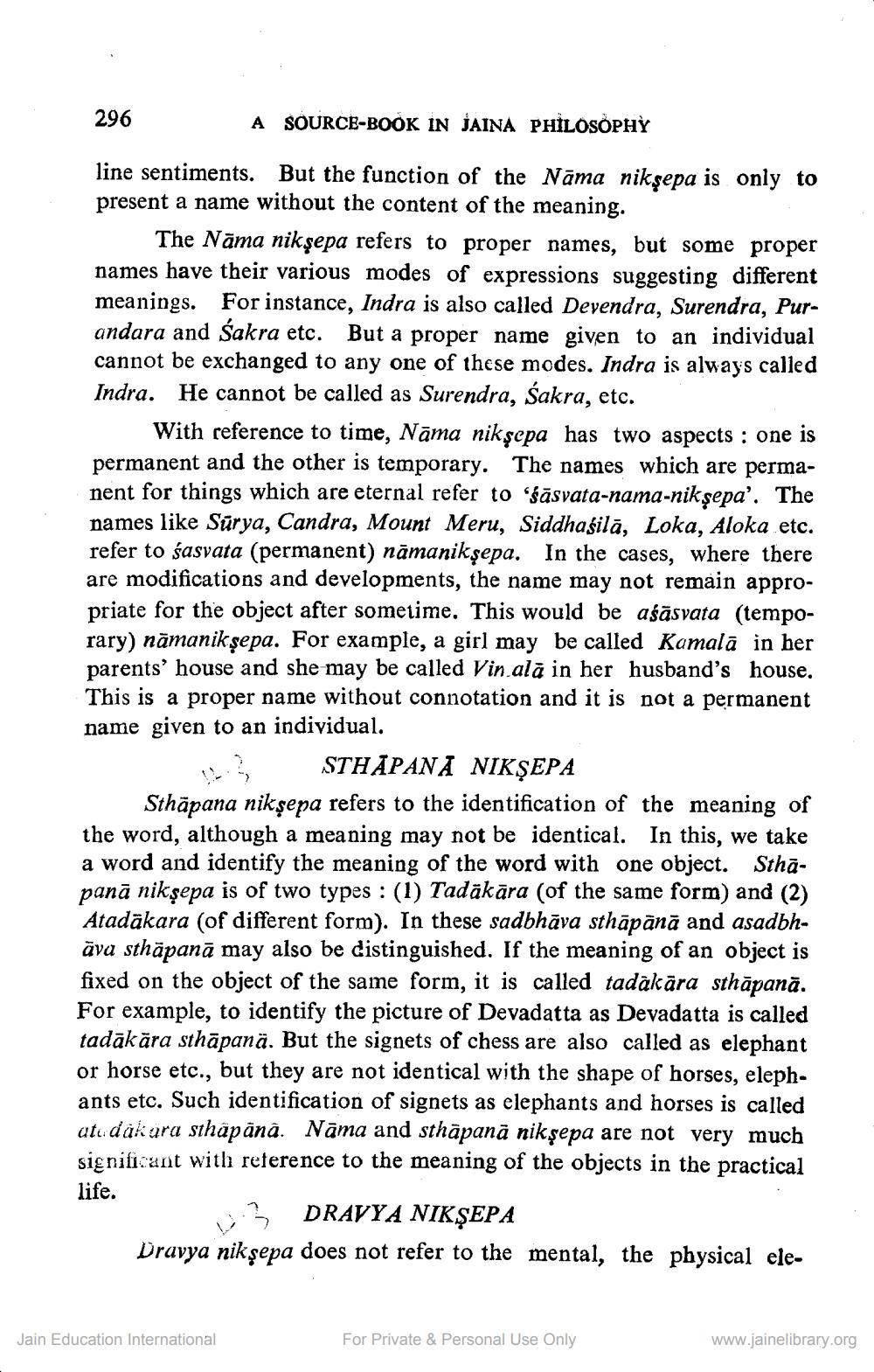________________
296
A SOURCE-BOOK IN JAINA PHILOSOPHY
line sentiments. But the function of the Nama nikşepa is only to present a name without the content of the meaning.
The Nama nikşepa refers to proper names, but some proper names have their various modes of expressions suggesting different meanings. For instance, Indra is also called Devendra, Surendra, Purandara and Sakra etc. But a proper name given to an individual cannot be exchanged to any one of these modes. Indra is always called Indra. He cannot be called as Surendra, Śakra, etc.
With reference to time, Nāma nikşepa has two aspects: one is permanent and the other is temporary. The names which are permanent for things which are eternal refer to 'sasvata-nama-nikṣepa'. The names like Surya, Candra, Mount Meru, Siddhaśilā, Loka, Aloka etc. refer to sasvata (permanent) nămanikṣepa. In the cases, where there are modifications and developments, the name may not remain appropriate for the object after sometime. This would be aśasvata (temporary) nămanikṣepa. For example, a girl may be called Kamalā in her parents' house and she may be called Vin.ală in her husband's house. This is a proper name without connotation and it is not a permanent name given to an individual.
STHĀPANĂ NIKṢEPA
Sthapana nikṣepa refers to the identification of the meaning of the word, although a meaning may not be identical. In this, we take a word and identify the meaning of the word with one object. Sthāpanā nikṣepa is of two types: (1) Tadākāra (of the same form) and (2) Atadakara (of different form). In these sadbhāva sthāpānā and asadbhāva sthāpanā may also be distinguished. If the meaning of an object is fixed on the object of the same form, it is called tadakara sthāpanā. For example, to identify the picture of Devadatta as Devadatta is called tadākāra sthāpanä. But the signets of chess are also called as elephant or horse etc., but they are not identical with the shape of horses, elephants etc. Such identification of signets as elephants and horses is called ate dakara sthāpānā. Nāma and sthāpanā nikşepa are not very much significant with reference to the meaning of the objects in the practical life.
DRAVYA NIKSEPA
Dravya niksepa does not refer to the mental, the physical ele
Jain Education International
For Private & Personal Use Only
www.jainelibrary.org




